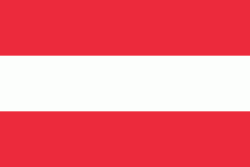Weitensfeld im Gurktal (Weitensfeld im Gurktal)
Weitensfeld im Gurktal (Prečpolje ob Krki) is a market town in the district of Sankt Veit an der Glan in the Austrian state of Carinthia.
First settlemenets were established when the Romans built a connecting road through the Gurk valley to Salzburg. Between 1050 and 1065 a settlement at the Zammelsberg (Zumoltiperg) arose due to immigration from Bavaria.
In 1479, emperor Friedrich III granted castle Weitensfeld to exiled members of Branković dynasty of Serbia.
After the formation of the local municipality in 1850, the cadastral municipalities of Thurnhof and Zweinitz were annexed to Weitensfeld in 1871. From 1973 onwards, Weitensfeld became part of the large municipality of Weitensfeld-Flattnitz. After a referendum, the municipalities of Deutsch-Griffen, Glödnitz and Weitensfeld became independent again in 1991. A part of Flattnitz initially remained with Weitensfeld, but was separated with effect from 1 January 1994 and annexed to the municipality of Glödnitz. Since January 1, 1995, the municipality has been called Weitensfeld im Gurktal.
Weitensfeld im Gurktal is twinned with:
* ?? Ragogna, Italy, since 2003
First settlemenets were established when the Romans built a connecting road through the Gurk valley to Salzburg. Between 1050 and 1065 a settlement at the Zammelsberg (Zumoltiperg) arose due to immigration from Bavaria.
In 1479, emperor Friedrich III granted castle Weitensfeld to exiled members of Branković dynasty of Serbia.
After the formation of the local municipality in 1850, the cadastral municipalities of Thurnhof and Zweinitz were annexed to Weitensfeld in 1871. From 1973 onwards, Weitensfeld became part of the large municipality of Weitensfeld-Flattnitz. After a referendum, the municipalities of Deutsch-Griffen, Glödnitz and Weitensfeld became independent again in 1991. A part of Flattnitz initially remained with Weitensfeld, but was separated with effect from 1 January 1994 and annexed to the municipality of Glödnitz. Since January 1, 1995, the municipality has been called Weitensfeld im Gurktal.
Weitensfeld im Gurktal is twinned with:
* ?? Ragogna, Italy, since 2003
Map - Weitensfeld im Gurktal (Weitensfeld im Gurktal)
Map
Country - Austria
 |
 |
| Flag of Austria | |
Austria emerged from the remnants of the Eastern and Hungarian March at the end of the first millennium. Originally a margraviate of Bavaria, it developed into a duchy of the Holy Roman Empire in 1156 and was later made an archduchy in 1453. In the 16th century, Vienna began serving as the empire's administrative capital and Austria thus became the heartland of the Habsburg monarchy. After the dissolution of the Holy Roman Empire in 1806, Austria established its own empire, which became a great power and the dominant member of the German Confederation. The empire's defeat in the Austro-Prussian War of 1866 led to the end of the Confederation and paved the way for the establishment of Austria-Hungary a year later.
Currency / Language
| ISO | Currency | Symbol | Significant figures |
|---|---|---|---|
| EUR | Euro | € | 2 |
| ISO | Language |
|---|---|
| HR | Croatian language |
| DE | German language |
| HU | Hungarian language |
| SL | Slovene language |















